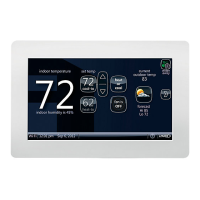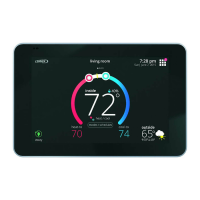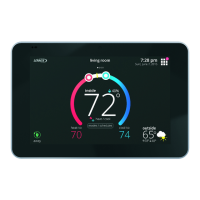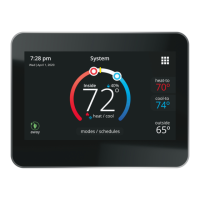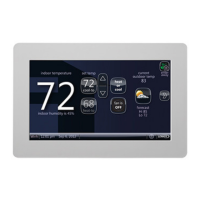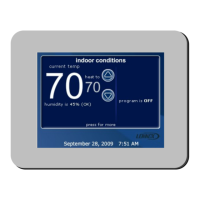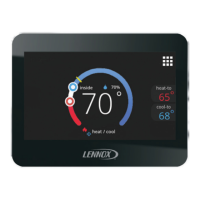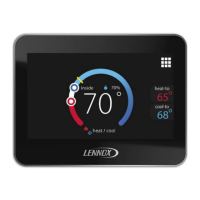507343-01
Page 40
determine the starting firing rate, and any required firing rate
increases or decreases during the thermostat demand.
During a heat demand, the iComfort
®
thermostat monitors the
differential between set point and room temp. As this
differential increases and reaches field adjustable levels
(stages), the thermostat will increase firing rate accordingly to
maintain room temperature and ultimately satisfy the heat
demand. On the next heat cycle, the iComfort
®
stat will
calculate a new starting firing rate (in 1% increments) with the
goal of maintaining room temperature at, or near, thermostat
set point with a minimum of system cycling. The principles of
operation are described in figure 43 and table 9.
STAGED OPERATION
Some furnaces can be configured to provide up to four stages
of gas heat operation. When staged heating is chosen, the
iComfort
®
thermostat allows you to choose between 1, 2, 3
and 4 stages of heat.
Single-stage heat: First-stage provides 100% of full
capacity.
Two-stage heat: First-stage provides 70% of full
capacity; 2nd stage provides 100% of full capacity.
Three-stage heat: First-stage provides 60% of full
capacity; 2nd stage provides 80% of full capacity; 3rd
stage provides 100% of full capacity.
Four-stage heat: First-stage provides 35 or 40% of full
capacity; second-stage provides 60% of full capacity; 3rd
stage provides 80% of full capacity; 4th stage provides
100% of full capacity.
LOAD-TRACKING VARIABLE CAPACITY FAQS
(SLP98V ONLY)
What is Load-tracking Variable Capacity? When an SLP98 Furnace
is connected to an iComfort Wi-Fi
®
thermostat, the thermostat
takes complete charge of the variable capacity staging of the
furnace. Load−tracking Variable Capacity is only
available
with iComfort Wi-Fi
®
thermostats.
How is Load-tracking Variable Capacity different from Variable Capacity?
Load-tracking Variable Capacity will smoothly track the load
(sensible temperature changes) up and down and adjust the
furnace heating rate both ways. Variable capacity only tracks
the load upward (rising temperature). Variable capacity uses
the thermostats stage differentials but not stage timers. LVC
disregards both stage differentials and stage timers.
What makes Load-tracking Variable Capacity work? With iComfort
®
Load-tracking Variable Capacity, the thermostat uses a
Proportional Integral Algorithm (PIA) to control firing rates of
the furnace. The algorithm in the Load-tracking Variable
Capacity provides much more precise control over the furnace
than the Variable Capacity algorithm.
Interesting Points about the Proportional Integral Algorithm (PIA):
The further temperature is from the current set point, the
higher PIA sets the heating rate.
The longer away from a programmed set point, the higher
the heating rate.
If needed, PIA will turn heating on and off in short cycles
when there is a heat demand that is lower than the lowest
the furnace can provide.
If the heat demand is higher than the minimum the furnace
can provide, the furnace will run without shutting off.
As the room temperature rises nearer the set point, the
heating rate will decrease.
As the room temperature falls further away from the set
point, the heating rate will increase.
The stage differentials have no effect when running the
PIA.
The second stage timers have no effect when running the
PIA.
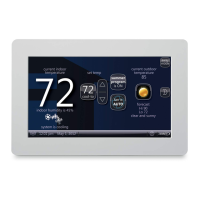
